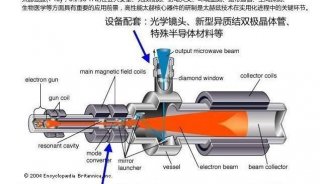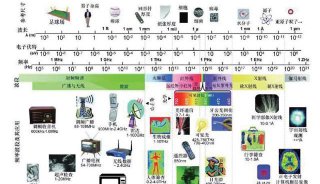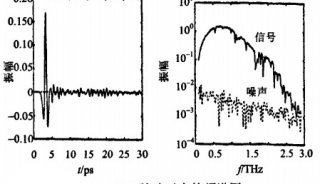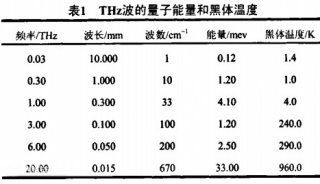3D打印毫米波太赫兹无源器件(二)
2. History of the 3D Printing Technology
Generally, the 3D printing technologies could be categorized as binding and depositing in terms of processes and metallic and dielectric in terms of materials. Figure 1 shows the history of 3D printing technology since it was invented in 1980, when Kodama applied a patent on rapid prototyping (RP). In 1986, a patent on stereolithography apparatus (SLA) was issued to Hull [3]. In 1992, Deckard et al. filed a patent on selective laser sintering [4]. Crump filed a patent on fused deposition modelling (FDM) in 1992 [5]. ARCAM was established in 1997 to develop the electron beam melting (EBM) technology [6]. MCP Technologies introduced the selective laser melting (SLM) in 2000 [7].
Figure 1: Chronicle of the 3D printing technology.
3. Review of 3D Printed Millimeter-Wave and Terahertz Passive Devices
3D printed mmWave and THz devices fall into categories of passive and active devices considering the functionalities. Because of the dimensional tolerance of existing 3D printing technologies, limited by the required gate length of mmWave transistors, it is very challenging to print a transistor of
and
falling in the mmWave spectrum. Most of the 3D printed mmWave and THz passive devices are seen as lenses, electromagnetic bandgap (EBG) structures, waveguide filters, and horns.
The first 3D printed mmWave passive device is a dual polarized horn reported in 2005 [8]. It was printed by SLA using Emerson and Coming HiK dielectric powder. It has an averaged gain of 12 dBi over the 34–40 GHz bandwidth. A Ka-band Luneburg lens with average 23 dBi gain was printed by ceramic stereolithography apparatus (CSLA) on photoreactive alumina in 2007 [9]. The CSLA was also used to print a Ka-band EBG bandpass filter (BPF) [10]. The filter has the center frequency of 32.94 GHz with 1.03% bandwidth. Frequency shift is caused by the dimensional tolerance in printing and shrinkage in postsintering. In 2008, a D-band (110–170 GHz) EBG resonator was printed by the micro SLA (μSLA) technology on alumina [11]. This work pushed the boundary of 3D printed devices from mmWave to THz spectrum. Lee et al. used the CSLA to print a W-band (75–110 GHz) EBG structure [12]. It has the 84–118 GHz bandgap. Then they transformed the EBG into an aperture antenna of 25 dBi gain [13]. Wu et al. conducted a series of experiments on the polymer jetting (PJ) technology. They firstly reported a 600 GHz woodpile structure (WPS) EBG and a 350 GHz Johnson EBG in 2008 [14], a G-band (140–220 GHz) hollow-core electromagnetic crystal (EXMT) waveguide in 2011 [15], and a D-band hollow-core EXMT antenna of 25 dBi gain in 2012 [16]. A Q-band (33–50 GHz) Luneburg lens was printed by Nguyen in 2010 [17], with 55–65 GHz bandwidth and 21 dBi gain. A W-band corrugated horn and waveguide were printed by SLA using UV-polymer in 2011 [18]. They were printed in split pieces and metal plated in postprocess. In 2013, a polymer jetted acrylic resin THz waveguide was reported [19]. A polymer jetted W-band dielectric reflectarray was introduced by Nayeri et al. in 2014 [20]. Later, in 2014, an H-band (220–325 GHz) waveguide and diagonal horn by SLA showed up [21]. Qu et al. reported an H-band SLA lens of 26.5 dBi gain [22]. In 2015, a Ka-band (26.5–40 GHz) offset stepped-reflector antenna was reported using SLS sintered nylon-polyamide [23]. A W-band waveguide and a W-band 6-order BPF were printed by D’Auria et al. in 2015 [24]. Besides, there are also works reported using 3D printing technologies for low frequency passive device fabrications [25–38].
From what is mentioned above, it can be seen that for most of the dielectric 3D printed passive devices the fabrication process is to first print the device in split pieces and then to metal plate and finally to assemble. Compared with the traditional CNC and EDM metallic devices, they have advantages of light weight and low cost. However, the disadvantages are quite obvious:
The process of metal plating and assembly increased the process complexity. The low mechanical strength of plastic and resin affects the life of the device. Pores in the dielectric body and different coefficient of thermal expansion make it impossible to be used in harsh environments such as space. The dielectric body ESD phenomenon will affect the other devices in the system. Metallic 3D printed devices effectively solve the problems due to the following: Good metal conductivity: metallic 3D printed THz devices can be printed in one run and do not require gold plating, which greatly reduces the process complexity and manufacturing costs. The physical strength of the metal makes the device life significantly extended. There is no thermal expansion related issue since the metal plating is not needed.
The ESD problem is minor in metallic device.
Before 2012, the only reported metallic 3D printed mmWave device was an SLM 50 mm waveguide [39]. In 2015, Zhang from Chalmers University of Technology conducted a series of experiments on metallic 3D printed mmWave and THz devices [40]. Firstly, six V-band (50–75 GHz) horn antennas were printed to select the appropriate “material + process + postprocess” for our purpose. Processes used are SLM and binder jetting. Materials are Cu-15Sn and 316L stainless steel. Postprocesses adopted to improve the surface roughness are manual polishing, gold plating, and the micromachined process (MMP). Figure 2 shows the surface profile of the 3D printed V-band horns using ZeGage optical surface profilometer. Table 1 compares the measured surface roughness. The SLM Cu-15Sn with MMP rendered the most satisfactory surface roughness of Sa = 0.25 μm for mmWave and THz applications. However, the cost of MMP treatment equals the SLM printing cost. Balancing between the cost and performance, the SLM Cu-15Sn with manual polishing was chosen as the formula for following experiments [41].
Table 1: Measured inner surface roughness of V-band horns.
Figure 2: Roughness of 3D printed V-band horns’ inner surfaces: (a) binder jetted 316L stainless steel without treatment, (b) gold electroplated binder jetted 316L stainless steel, (c) MMP treated binder jetted 316L stainless steel, (d) manually polished SLM Cu-15Sn, (e) gold electroplated SLM Cu-15Sn, and (f) MMP treated SLM Cu-15Sn.
A series of mmWave and THz devices were printed after the formula of “material + process + postprocess” is chosen. E- (60–90 GHz), D- (110–170 GHz), and H-band (220–325 GHz) 3D printed horn antennas were reported to be of comparable performance with commercial counterparts, while featuring considerable cost reduction in Figure 3 [42]. Because most of the horn’s surface is touchable by the polishing kit, the 3D printed horn antennas feature very good surface finishing of Sa = 3 μm. Waveguides are also printed at the E-(WR-12), D-(WR-06), and H-band (WR-03) in Figure 4 [43]. ±5% dimensional tolerance is observed. Since the cross section of the waveguide is in the scale of millimeter, barely anything could be done to improve the inner surface roughness. As a result, the skin depth related insertion loss brought about by the surface roughness becomes apparent when the functional frequency increases. In general, the 3D printed waveguides show acceptable performance up to the E-band. For the D- and H-band 3D printed waveguide, space remains for the improvement of dimensional tolerance and surface roughness. Attempts have been made to print E-band BPF in Figure 5 [44]. Two Chebyshev waveguide iris BPFs of passbands 71–76 GHz and 81–86 GHz were printed. Subject to the undesirable dimensional tolerance and surface roughness, the BPFs demonstrate promising behavioral agreement between simulation and measurement. The 3D printed BPFs are assembled as a diplexer (Figure 6) and then formed together with the 3D printed E-band horn into a front end (Figure 7) [45]. Though behavioral agreement is observed between the simulation and measurement, the accumulated influence of the dimensional tolerance and surface roughness from different component of the front end becomes obvious from the shifted functional band and deteriorated insertion loss.
Figure 3: 3D printed horns antennas, from top E-, D-, and H-band.
Figure 4: 3D printed waveguides, from left: 50 mm straight waveguide, 100 mm straight waveguide, and bend waveguide.
Figure 5: 3D printed BPFs: (a) 71–76 GHz BPF perspective view, (b) photograph, and (c) flange view; (d) 81–86 GHz BPF perspective view, (e) photograph, and (f) flange view.
Figure 6: 3D printed E-band diplexer: (a) perspective view and (b) photograph.
Figure 7: 3D printed E-band front end: (a) perspective view and (b) photograph.
-
会议会展

-
焦点事件














